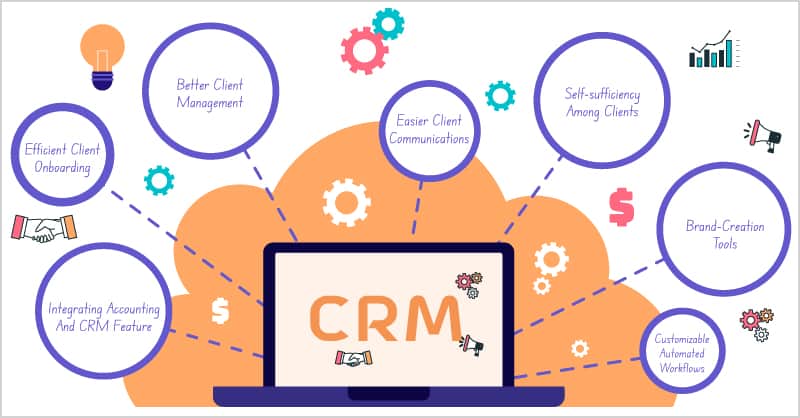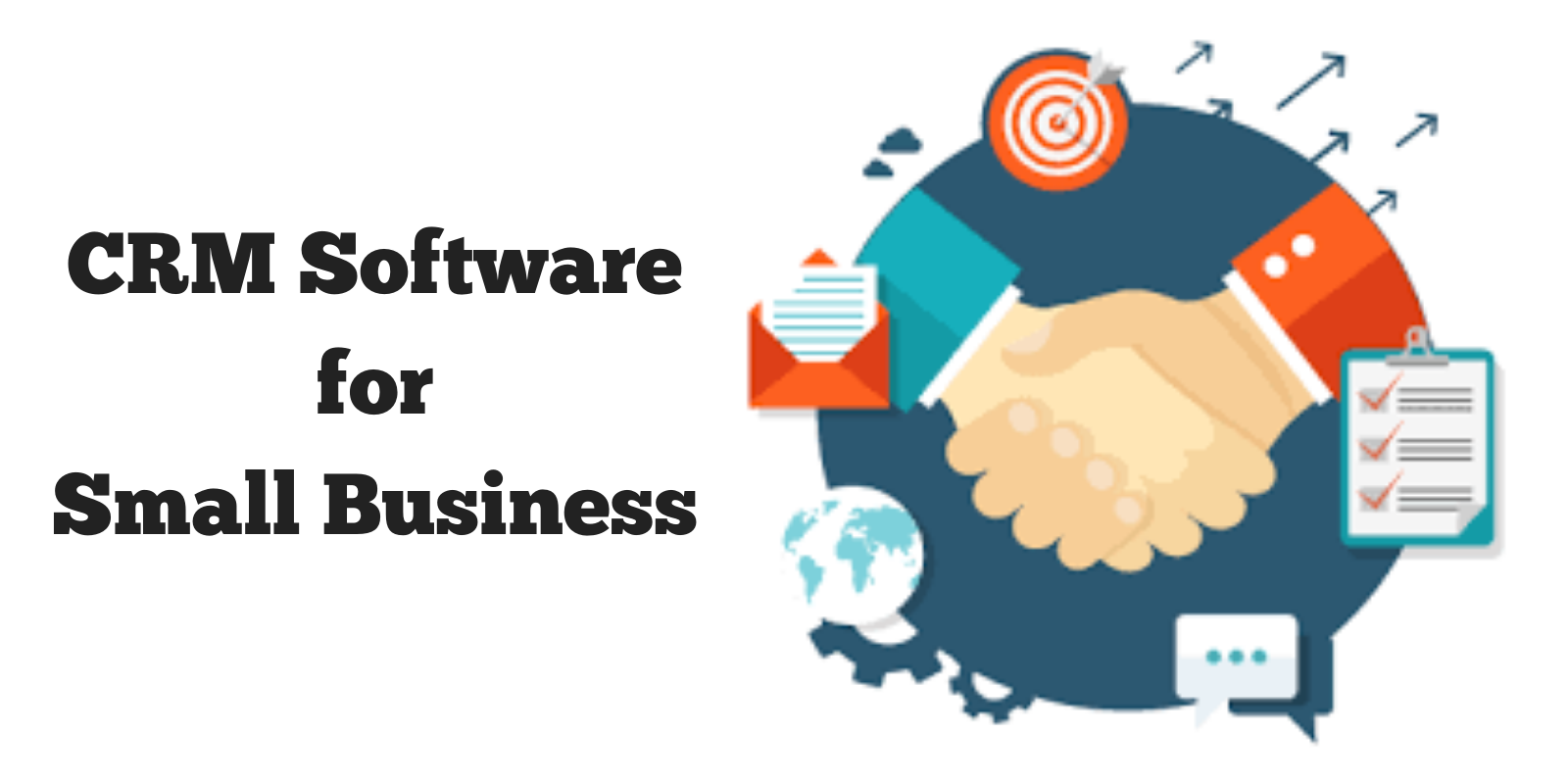crm and accounting for small business streamline your workflow by bridging the gap between customer management and financial organization. Small business owners often wear many hats, and the ability to unify CRM and accounting ensures nothing falls through the cracks, making every interaction and transaction count. It’s an essential move for those who want better control, fewer bottlenecks, and more time to focus on growth.
Integrating CRM and accounting systems offers a unified platform where customer data, sales pipelines, invoicing, and expense tracking all come together seamlessly. Without this integration, small businesses often face challenges like duplicated data, manual entry errors, and missed opportunities for follow-ups or financial insights. By leveraging the strengths of both systems, owners and teams can automate everyday tasks, improve customer relationships, and gain real-time financial clarity—creating a smoother path to success.
Introduction to CRM and Accounting for Small Business
Modern small businesses face the dual challenge of managing customer relationships while maintaining accurate financial records. Integrating Customer Relationship Management (CRM) systems with accounting software is a strategic move that empowers small businesses to operate more efficiently and deliver better experiences to their customers.
Seamless integration between CRM and accounting systems allows for synchronized customer data, streamlined invoicing, and holistic business insights. This synergy not only improves workflow efficiency but also reduces manual errors and administrative overhead, enabling teams to focus on growth.
The Benefits of CRM and Accounting Integration
The integration of CRM and accounting platforms yields multiple benefits by automating data transfer, improving collaboration across departments, and offering a unified view of both customer and financial information.
- Reduces redundant data entry and manual updates across different systems.
- Speeds up invoicing and payment processing by linking sales and finance data.
- Improves decision-making with consolidated reporting and analytics.
- Enhances customer service by providing complete purchase and payment histories.
Common Challenges Without Integrated Systems
Operating without CRM and accounting integration creates several obstacles for small businesses. Disjointed systems can result in data silos, communication breakdowns, and missed opportunities for customer engagement.
- Inconsistent data across platforms leads to confusion and potential errors.
- Manual entry increases the risk of mistakes and consumes valuable time.
- Limited visibility into the entire customer lifecycle and financial status.
- Difficulty generating holistic reports for strategic planning.
Core Features of CRM for Small Business
A CRM system designed for small businesses typically includes features that support customer interaction, sales management, and workflow automation. Selecting the right CRM ensures the organization can nurture leads, stay on top of tasks, and provide personalized service, all while scaling as the business grows.
Key CRM Functionalities
Effective CRM solutions for small businesses are feature-rich yet user-friendly, providing essential tools for managing daily operations and long-term relationships.
| Feature | Description | Benefits | Example Use Case |
|---|---|---|---|
| Contact Management | Centralizes customer information and interaction history. | Enables personalized communication and targeted marketing. | Tracking email exchanges and purchase history. |
| Sales Tracking | Monitors sales opportunities, leads, and deals in progress. | Improves sales forecasting and pipeline visibility. | Prioritizing follow-ups on hot leads. |
| Task Automation | Automates repetitive activities such as follow-up emails and reminders. | Increases productivity and reduces manual workload. | Automatically sending a thank-you email after a sale closes. |
| Reporting & Analytics | Provides data-driven insights into sales and customer engagement. | Helps refine marketing and sales strategies. | Analyzing which channels deliver the most leads. |
CRM’s Role in Customer Management, Sales Tracking, and Automation

CRM platforms are instrumental in ensuring businesses never lose track of customer interactions or sales opportunities. By centralizing communication, automating routine tasks, and providing clear insights, CRMs empower small teams to deliver big results.
- Maintain up-to-date customer profiles for more effective engagement.
- Monitor and nurture leads through every stage of the sales funnel.
- Automate repetitive processes to reduce errors and save time.
Essential Accounting Functions for Small Business

Robust accounting software is crucial for small businesses to stay compliant, track performance, and ensure financial stability. Core accounting features help manage cash flow, monitor expenses, and generate accurate reports for decision-making.
Accounting Software Features for Small Business Management
When evaluating accounting software, small businesses should prioritize functionalities that cover their foundational financial needs and offer integration capabilities to avoid isolated financial data.
| Feature | Description | Purpose | Integration Potential |
|---|---|---|---|
| Invoicing | Creates and sends professional invoices. | Ensures timely billing and payment collection. | Can auto-populate invoices using CRM sales data. |
| Expense Tracking | Records and categorizes business expenses. | Helps monitor budgets and control costs. | Links expenses to customer projects or jobs. |
| Financial Reporting | Generates statements like P&L, balance sheet, and cash flow. | Supports informed financial decisions and compliance. | Combines sales and payment data for holistic reporting. |
| Bank Reconciliation | Matches transactions against bank statements. | Detects discrepancies and ensures accurate records. | Automates reconciliation using sales and payment info from CRM. |
Role of Accounting Software in Invoicing, Expense Tracking, and Reporting
Accounting solutions help small businesses manage their finances with accuracy and efficiency. Automated invoicing ensures prompt billing, expense tracking provides clarity on spending, and comprehensive reports empower owners with actionable financial insights.
- Automate invoice generation based on completed CRM sales.
- Track business purchases and allocate them to specific clients or projects.
- Produce up-to-date financial reports for tax filing or strategic planning.
Advantages of Integrating CRM and Accounting Systems
Combining CRM and accounting systems brings a new level of efficiency to small business operations. Integration eliminates silos, ensuring that customer and financial data flow seamlessly across platforms, enabling faster decision-making and better service.
Streamlining Information Flow and Customer Interactions
Integrated systems facilitate real-time information sharing between sales, service, and finance teams. This unified data approach enables accurate invoicing, prompt customer support, and comprehensive reporting.
- Customer contact details and sales history are instantly accessible for invoicing.
- Sales and payment statuses are updated automatically, reducing administrative delays.
- Financial data from every customer interaction is consolidated for easy analysis.
Real-World Improvements After Integration, Crm and accounting for small business
Small businesses report several tangible benefits after integrating CRM and accounting software:
- 30% reduction in manual data entry and administrative workload.
- Faster invoice processing times, leading to quicker payments.
- Improved accuracy in financial and sales reporting.
- Enhanced customer satisfaction due to more personalized and timely communication.
Popular Platforms that Combine CRM and Accounting
Several software platforms are designed to provide both CRM and accounting functionalities specifically for small businesses. These solutions vary in features, integration depth, and pricing, allowing businesses to select the best fit for their needs.
Leading CRM and Accounting Software Solutions
An overview of popular platforms and their distinguishing features can help small business owners make informed choices.
| Platform Name | CRM Capabilities | Accounting Features | Price Range |
|---|---|---|---|
| Zoho One | Lead management, workflow automation, sales analytics | Invoicing, expense tracking, multi-currency support | $37–$105/user/month |
| FreshBooks | Basic contact management, project collaboration | Billing, payment tracking, reporting | $17–$55/month |
| QuickBooks Online + Method:CRM | Custom workflows, lead tracking, email integration | Full-featured accounting, payroll, tax filing | $30–$200+/month |
| HubSpot + Xero | Pipeline management, marketing automation | Invoicing, reconciliation, real-time reporting | $0–$150+/month (combined) |
Distinguishing Features of Each Platform
- Zoho One: Highly customizable, all-in-one suite for businesses seeking end-to-end integration.
- FreshBooks: User-friendly interface with strong invoicing and expense tracking, ideal for freelancers and small teams.
- QuickBooks Online + Method:CRM: Deep QuickBooks integration with advanced CRM customization.
- HubSpot + Xero: Seamless connection between sales pipeline management and real-time accounting data.
Step-by-Step Procedure to Integrate CRM and Accounting Tools
To maximize the benefits of integration, small businesses should follow a systematic process when connecting their CRM and accounting platforms. Proper preparation and execution help prevent data loss, minimize disruptions, and ensure a smooth transition.
Pre-Integration Checklist
Preparation is key to successful integration. Ensuring data accuracy and compatibility before starting the process can save significant headaches down the road.
- Audit existing customer and financial data for completeness and accuracy.
- Identify which data fields and processes need to be synchronized.
- Choose integration-compatible platforms or middleware solutions.
- Back up all data before making any system changes.
- Communicate integration plans with relevant team members.
Integration Process Flowchart
The following flowchart Artikels the typical steps involved in integrating CRM and accounting software in a small business environment.
| Step 1 | Review integration documentation for chosen platforms |
| Step 2 | Configure integration settings (API keys, field mapping, permissions) |
| Step 3 | Test data synchronization with a small sample |
| Step 4 | Resolve any sync errors or data conflicts |
| Step 5 | Launch full integration and monitor data flows |
| Step 6 | Train users on integrated workflows |
Data Management and Security Considerations
Secure data management is vital when integrating CRM and accounting systems. Sensitive financial and customer data must be protected at every stage to maintain trust and regulatory compliance.
Importance of Security and Data Integrity
Integrated systems store valuable information that, if compromised, can harm both business operations and customer relationships. Maintaining accurate and secure records is not only a best practice but often a legal requirement for small businesses.
Best Practices for Data Management and Privacy
Adhering to industry standards and implementing robust internal controls helps prevent data breaches and ensure information stays protected.
- Use strong, unique passwords and enable multi-factor authentication.
- Regularly update software to patch security vulnerabilities.
- Limit data access based on employee roles and responsibilities.
- Encrypt sensitive data both in transit and at rest.
- Back up data frequently and test recovery procedures.
Common Threats and Solutions
Every integration faces certain risks, but proactive measures can significantly reduce exposure.
- Phishing Attacks: Educate staff to recognize suspicious emails and links.
- Unauthorized Access: Apply strict permission controls and monitor account activity.
- Data Corruption: Use automated backups and transaction logs to enable quick recovery.
- Regulatory Non-Compliance: Stay updated on relevant data protection laws (like GDPR or CCPA).
Customization and Automation Opportunities: Crm And Accounting For Small Business
Customization and automation are key drivers for maximizing the value of integrated CRM and accounting systems. Tailored workflows allow small businesses to address unique challenges, while automation reduces routine work and minimizes human error.
Customizing Workflows for Efficiency
Businesses can adapt CRM and accounting processes to align with their existing operations. This flexibility ensures that technology complements, rather than disrupts, day-to-day activities.
- Adjust pipeline stages to reflect the actual sales process.
- Configure expense categories and reporting templates specific to the business.
- Create custom fields to capture industry-relevant data.
Automation Scenarios in Integrated Systems
Automating key actions across platforms can significantly impact efficiency. Common automation triggers and their corresponding actions include:
| Trigger | Action |
|---|---|
| New sale closed in CRM | Automatically generate and send invoice in accounting software |
| Overdue payment detected in accounting | Notify account manager via CRM for follow-up |
| Customer updates contact details | Sync new info across both systems instantly |
| Recurring monthly billing cycle | Auto-generate invoices and reminders without human intervention |
Impact of Automation on Productivity and Error Reduction
Automation not only frees up staff for higher-value tasks but also ensures consistency and accuracy.
- Reduces manual entry and duplication of work.
- Minimizes risks of invoicing or reporting errors.
- Enables faster response to customer inquiries and payment issues.
Training Staff and Change Management

Successfully deploying new CRM and accounting integrations relies on more than just technology. Proper training and change management strategies ensure teams are comfortable and confident using new tools, accelerating adoption and ROI.
Strategies for Introducing New Systems
A clear rollout strategy, combined with effective communication, lays the foundation for successful change.
- Involve key team members early in the selection and planning process.
- Set realistic timelines and expectations for system go-live.
- Communicate the benefits and new workflows clearly to all staff.
- Offer support channels for feedback and troubleshooting.
Effective Training Methods
Training should be practical, hands-on, and tailored to each team’s responsibilities. Combining different formats boosts engagement and retention.
- Conduct live demos and Q&A sessions for real-time learning.
- Provide step-by-step guides and video tutorials.
- Assign mentors or internal champions to assist peers.
- Encourage ongoing learning through refresher courses.
Recommended Resources and Support Options
Reliable support and learning resources play a crucial role in helping staff adapt to new systems.
- Vendor knowledge bases and online help centers
- Community forums for sharing best practices
- Dedicated customer support hotlines or chat services
- On-demand training webinars and certification programs
Final Conclusion
Bringing crm and accounting for small business into one seamless experience not only simplifies day-to-day work but also opens up new possibilities for efficiency and growth. With the right tools and strategies, small businesses can achieve greater accuracy, improved collaboration, and smarter decision-making, all while delivering a better experience for their customers. Adopting integrated systems is a proactive step towards building a more agile, resilient business in today’s competitive landscape.
Question & Answer Hub
What is the main benefit of integrating CRM with accounting software for small businesses?
The main benefit is having a single source of truth for customer and financial data, which streamlines workflows, reduces errors, and enables better decision-making.
Can CRM and accounting integration help reduce manual data entry?
Yes, integration automates data transfer between systems, minimizing manual entry and the risk of duplicate or incorrect records.
Are there CRM and accounting solutions designed specifically for small businesses?
Absolutely, many platforms offer tailored features and pricing for small businesses, providing the right balance of functionality and affordability.
How difficult is it to train staff on integrated CRM and accounting tools?
Most modern solutions include user-friendly interfaces and training resources, making it relatively straightforward to onboard teams, especially with proper planning and support.
Is it possible to customize workflows after integration?
Yes, many integrated platforms allow you to tailor workflows and automate processes to fit your business needs as they evolve.
